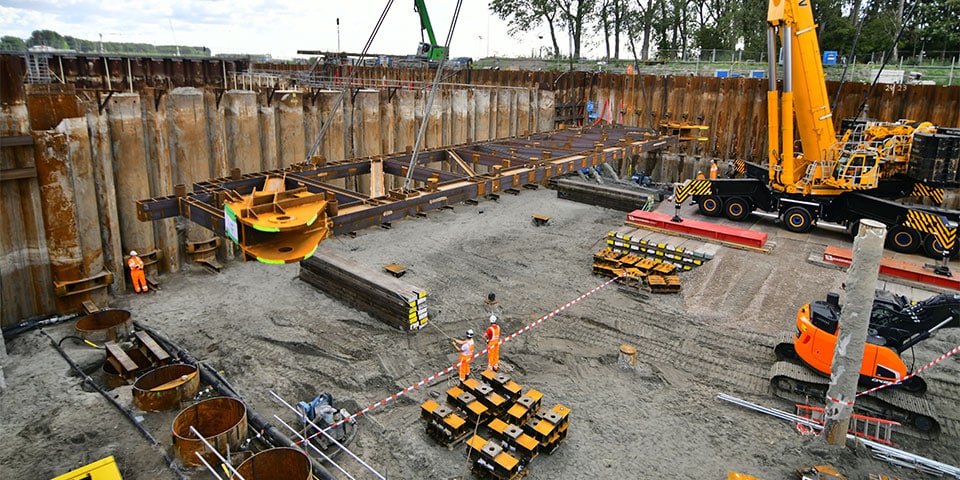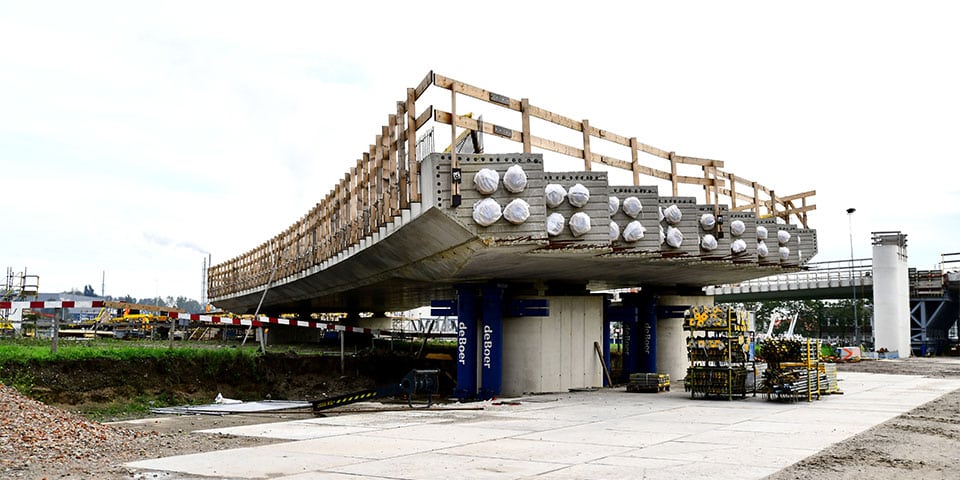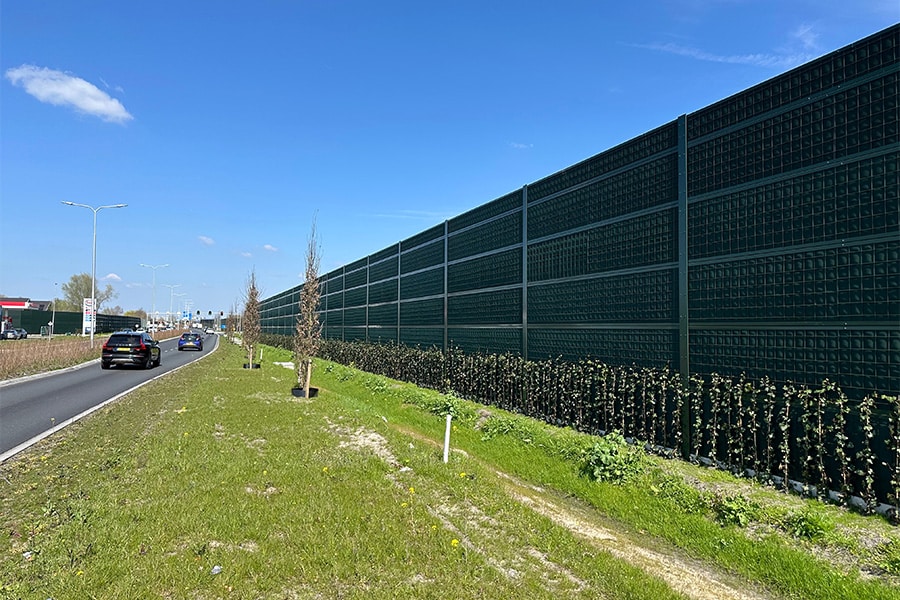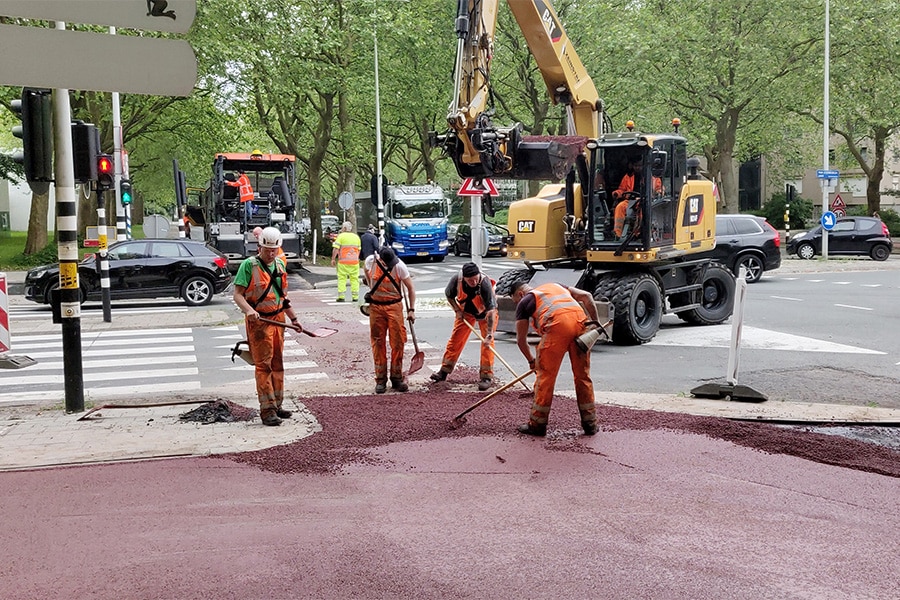
Concatenation of engineering structures
Besides the Van Brienenoord Bridge and the Beneluxtunnel, the Rotterdam region is getting a third crucial connection between north and south: the A24 Blankenburg connection. The newly constructed A24 is a four-kilometer stretch with a succession of engineering structures. An interview with both execution directors of construction consortium BAAK about the new, impressive connection. BAAK is a consortium of Ballast Nedam, DEME Group and Macquarie.
The new A24 at a bird's eye view from north to south: "The new alignment begins with a sunken interchange at the A20, followed by a sunken alignment and then a land tunnel (Holland Tunnel), so that the green and vast landscape remains intact," says Bart Meijer, director of execution at BAAK. "We then pass two viaducts to cross a road and a railroad line, the flood barrier and then the technical highlight: the 945-meter-long Maas Delta Tunnel followed by an above-ground junction with the A15. In short, truly a special and for us as infrastructure contractors an extremely fascinating project."

Two faces
The Blankenburg connection will improve traffic flow, relieve the existing infrastructure and thus make the traffic network more reliable. The Rotterdam region will become more accessible with this new connection, contributing to the growth of the Port of Rotterdam and Greenport Westland. "Given the project size and complexity, the route has been cut into two parts by BAAK," Meijer explains. "We consider the Maas Delta Tunnel to be a project in itself, while the construction of all the other structures and connections, including widening of the A20 and A15, together form the second 'sub-project.' Uniquely, the connection actually has two faces: near the A20, the new route is largely sunken and blends into the landscape. On the industrial side (south side), the picture is completely the opposite with large flyovers and structures above ground level."
Smart concepts
The construction of the Blankenburg connection has been "wrapped" by the Department of Public Works in a DBFM contract. BAAK is therefore responsible not only for the design and execution, but also for the maintenance over a period of 20 years. "Rijkswaterstaat challenged the market to come up with a smart design with as little disruption to the environment as possible," says Robbert de Groot, director of execution at BAAK. "In this we succeeded well. For example, we constructed a temporary logistics route, the underpass with the Hoekse Lijn was realized immediately in the initial phase, and most of the raw materials are delivered via water to a newly realized quay wall. By cutting the Maas Delta Tunnel into just two slots instead of six in the original design by the Department of Public Works and Water Management, a huge gain is made for the port of Rotterdam. After all, it leads to significantly fewer obstructions of the waterway. What is also special and challenging is that we are building both elements of the immersion tunnel on our own site. On both sides of the river we are creating a dock floor above the tunnel entrance. On this we realize the 200-meter-long immersion elements."

So the Blankenburg connection is rightfully a project with a lot of variety, De Groot sums up. "Actually all the disciplines you can encounter in our fascinating profession are united in this project. That makes the project extremely exciting and challenging; truly a 'one of a kind'." The A24 Blankenburg connection is scheduled to be put into service in 2024.



